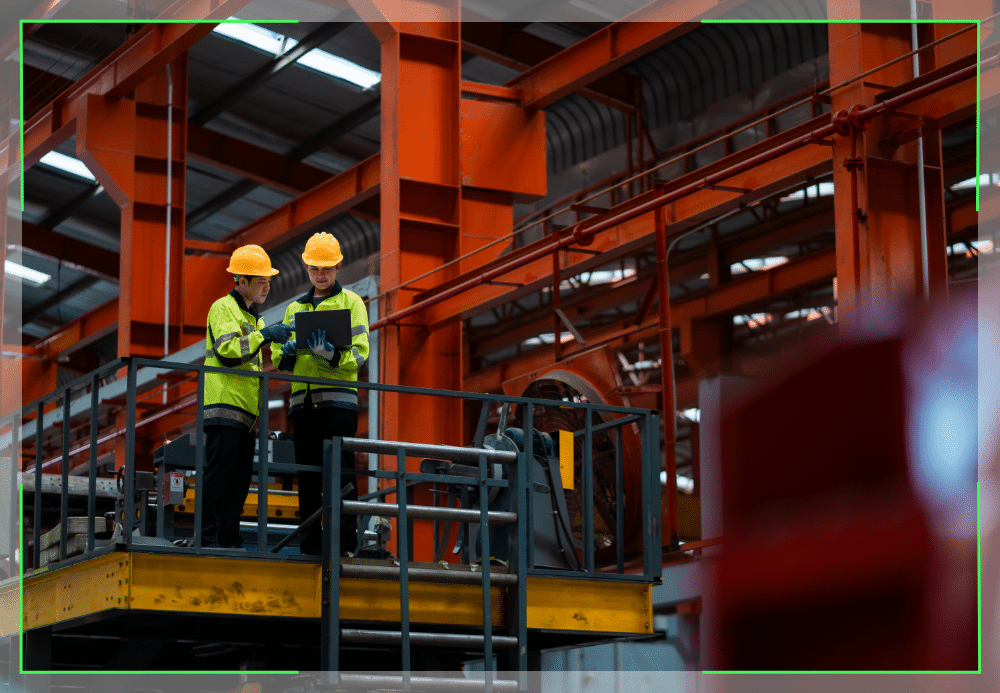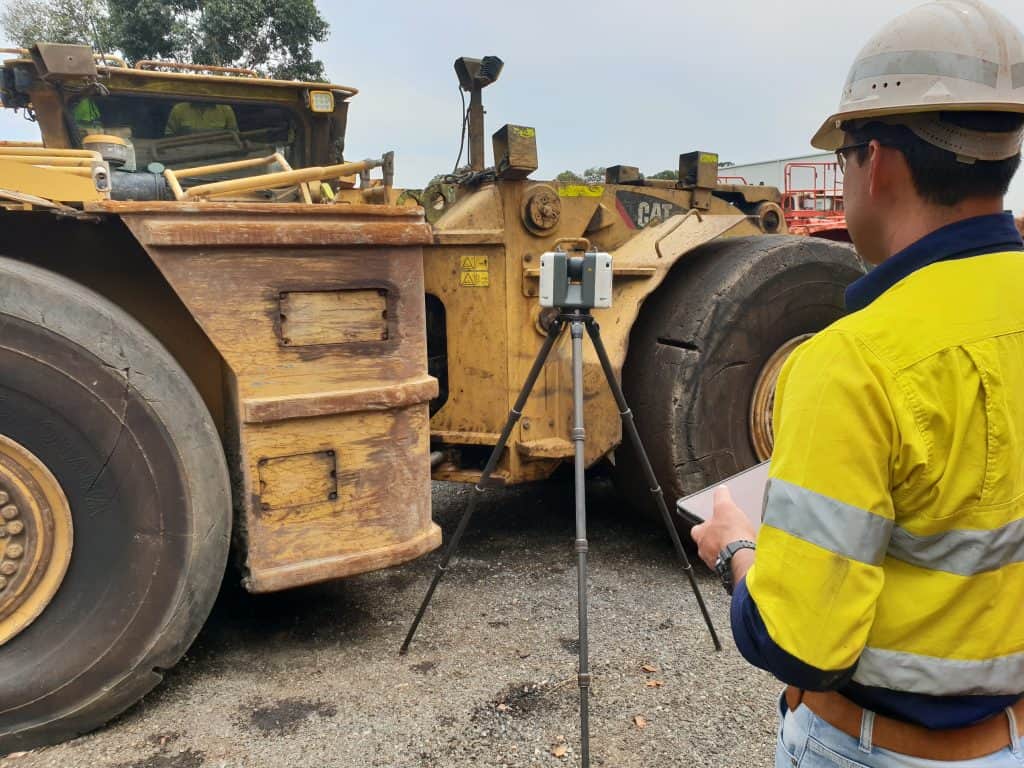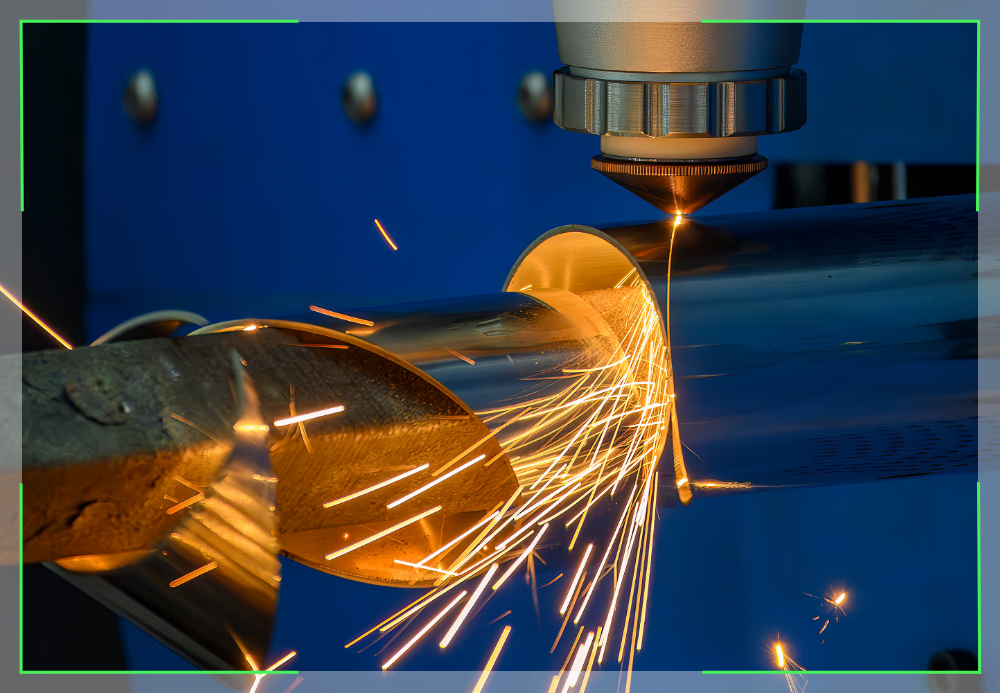Safety platforms, or access platforms, have multiple uses across job sites. When you have workers working at a low or high height, a safety platform is much more sturdy and secure than a ladder. It gives workers a sturdy platform to work on when they carry out tasks and adequate space for tools and equipment. Like any piece of equipment on-site, safety platforms need to be regularly inspected, with maintenance carried out to ensure they are safe for workers to use. Find out what kind of inspection schedule you should implement for your safety platforms and the common types of maintenance that this equipment needs.
What is a Safety Platform?
When we talk about safety platforms, this can cover a wide range of equipment used in industrial or construction settings. Some safety platforms are fixed to allow temporary or permanent access to a higher level, while others are portable and can be moved around an area such as a warehouse as needed. There are safety platforms that are fixed at one level, while others are adjustable or can be moved up and down to transport people and goods.
Whatever kind of safety platform your business uses, following work health and safety guidelines is important. Safety platforms are designed to keep workers safe, but they are at their most effective when well-maintained and used properly. There are also legal obligations when it comes to having employees working at height, so employers need to ensure they’re doing everything they can to make the environment as safe as possible for them.
Inspecting a Safety Platform
How often do safety platforms need inspections?
Safety platforms need regular inspections. Usually, the manufacturer will give recommendations as to how often these need to be carried out, which allows you to draw up a schedule.
If there are no specific instructions about the frequency of inspections, then you’ll need to work this out based on the design of the platform, the materials used, and its usage. Older models or platforms that are older or used heavily may need more frequent inspections, as they’re more at risk from the wear and tear of the components.
Safety platforms should have an inspection before they’re installed, especially if they’re used. This is because some issues are only apparent when the equipment is dismantled, for example, corrosion inside joints or worn brakes.
Pre-operation, a visual inspection can also help identify many issues, from cracks to oil leaks. By identifying small issues such as these, you can prevent further damage, such as structural issues that can occur after repeated use. Once operating, you should ensure regular maintenance is carried out by the assigned person. This should be documented, with records kept of the dates that inspections were completed and by who, to confirm the platform is in a safe condition and ready to use. If there is an accident when using a safety platform, it’s important to have this evidence to hand in case an investigation needs to be carried out.
Who Inspects Safety Platforms?
If you’re buying or hiring a safety platform, the company that manufactures or provides the product should carry out a comprehensive inspection before it is delivered to you. This is why it’s important to buy from an experienced, reputable company such as Bend Tech Group, whose platforms are certified and compliant with Australian Standards. Having a good quality platform will make it less likely to have issues down the line and is an excellent investment.
Once the platform is installed, you need to ensure you have people on-site who can competently carry out inspections. As per Safe Work Australia guidelines, a competent person needs to have the right knowledge and skills to carry out an inspection, whether that comes from experience or a relevant qualification. They should be familiar with safety platforms and follow manufacturers’ guidelines for the specific model being inspected. Also, the person carrying out the inspection should be aware of any safety bulletins that are issued by the manufacturer and follow these accordingly, adjusting the maintenance schedule as needed.
Types of Inspection
All types of safety platforms will need multiple inspections, including:
- Pre-operational inspection – this is usually a visual inspection at the start of a shift, checking controls and looking out for damage, such as leaks or cracks. It’s worth putting together a checklist based on the manufacturer’s recommendations to ensure everything is covered.
- Routine inspections – these are generally carried out every three months but can be done more often if recommended by the manufacturer or if the equipment is in heavy use. A routine inspection looks at the equipment in more detail, which will be discussed below.
- Periodic inspections – the intervals in which these are carried out are usually based on the amount of usage, but at a minimum should be carried out once a year. Periodic inspections look at components in more detail, allowing you to check for any potential issues.
- Major inspections – these are usually carried out after the platforms have been in use for ten years and then every five years after that unless the manufacturer advises otherwise. They involve dismantling the platform and assessing each component, ensuring each part and the overall assembly is still safe and fit for purpose.
Some areas that are covered in a routine inspection include:
- Removing components and covers to ensure they’re properly inspected
- Reviewing whether pre-operational inspections are being properly carried out and logged
- Ensuring paperwork such as manuals are available, and that signage is in place
- Checking lubrication and fluid levels
- Checking whether each function is working correctly
This is not an exhaustive list but gives a general overview. Your manufacturer should provide a much more detailed list of what needs checking during each inspection interval. As with all inspections, it’s important that the process is logged and issues quickly rectified to ensure the safety of the workers using the platform.
Maintenance of Safety Platforms
Regular maintenance of a safety platform is essential for many reasons. A well-maintained safety platform can last longer and offer better performance over time. Broken or damaged platforms can disrupt the working day, which is costly and affects productivity. A good maintenance program can also help reduce repair costs in the long term. It means you can fix any issues while they’re still minor and not left with a more expensive major repair.
In addition to carrying out regular inspections, the following types of maintenance and best practices can help keep your safety platforms performing well for longer.
Use Equipment Properly
One of the things that can soon wear out or damage a safety platform is improper use. To keep it well-maintained, workers must be trained to use it properly. It’s worth making this kind of training part of inductions for new workers to encourage good habits as soon as they start on-site.
Know Platform Limits
Like any piece of equipment, safety platforms have weight limits. It’s important not to breach these limits for two main reasons, it can be dangerous for workers, and it’ll wear out the equipment much faster. Check your manual and ensure there’s proper signage to advise of things like weight limits.
Transport Equipment Properly
The number of times equipment is moved or transported can affect its performance over time. To keep equipment in good condition, only transport a fixed safety platform when necessary and ensure it’s carefully stored when moving.
Use Approved Components
If you need to replace parts during maintenance, it’s important to use manufacturer-approved components. Cheaper components may not be safe to use and may fail much more quickly than approved components. It’s also important not to modify components or use them for something other than their approved use. Not only can this make your safety platform less safe, but it could also potentially cause expensive damage to your equipment, which will cost you more in the long term.
Ensure Proper Installation
Maintenance is so much easier if the equipment has been properly installed and tested before it’s used. It’s worth picking a manufacturer who can design and install the safety platform rather than just delivering it to your site. This will ensure it’s made to accommodate the needs of your business.
Follow Manufacturer Recommendations
A reputable manufacturer will provide an exhaustive list of inspection points and maintenance that should be carried out on your safety platform. You should also be provided with a manual with further information on maintenance and best practices. This will help you to put together a program of inspections and maintenance and keep track of them. Many manufacturers will also provide updates on any potential safety issues, so make sure you have someone checking these alerts and implementing any changes as needed.
Safety platforms can be used in a wide variety of environments to make working at a height easier and safer for employees. If you’re looking for high-quality safety platforms that can be tailored to your needs, browse the range available at the Bend Tech Group and discover the many different solutions for different industries.








About The Author: Highjumpdev
More posts by Highjumpdev